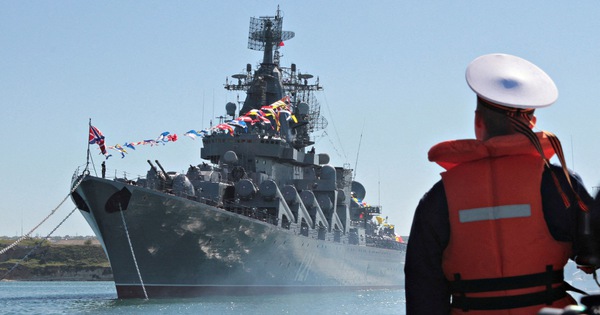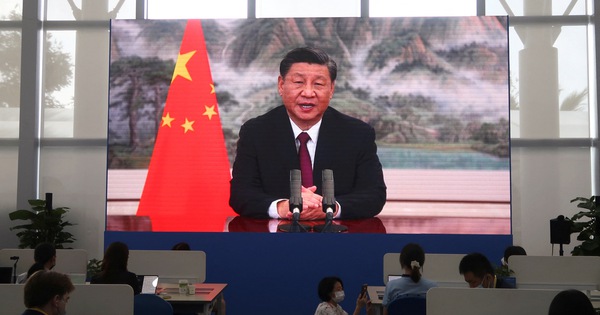China’s intentions when deploying UAVs on aircraft carriers
Through the image of unmanned aircraft (UAV) on the aircraft carrier Shandong of China ChinaWhat ambitions does this country’s navy have?
Yesterday afternoon (3.6), sheet South China Morning Post Some pictures have just appeared showing that China’s Shandong aircraft carrier carries on deck 7 large sized UAVs. Show ship, Battleship Shandong is in the maintenance phase after more than 2 years of operation since it was officially launched in December 2019.
From ambition
Accordingly, this is not the first time large UAVs appear on Chinese warships. The above UAVs are also the same type of UAV that appeared on China’s Type 052C destroyer during an exercise in 2019. This type of UAV is capable of hunting submarines and spying.
 |
Image of UAV on the Shandong aircraft carrier |
Recently, China is increasing the development of UAVs, unmanned ships on the water and in the sea. Recently, this country launched a self-propelled “mother” ship named Chu Hai Van with a length of 88.5 m, a body up to 14 m wide, a displacement of 2,000 tons and can especially carry dozens of unmanned devices. such as UAVs, surface ships and self-propelled submersibles. Zhuhai Van ship is said to integrate artificial intelligence system, help collect data information and perform a number of other tasks.
Answer Youth On June 3, about the appearance of the UAV on the Shandong ship, Mr. Carl O.Schuster (former director of the operations department of the Joint Intelligence Center – Pacific Command of the US Navy and teaching at the University of Hawaii School of International Relations, History) commented: “I believe that China is testing its aircraft carriers that can use UAVs in the process of coordinating fleet operations. Most defense analysts believe that UAVs will become increasingly important to air warfare over the next decade. In particular, many experts believe that UAVs can prevail in air combat once the artificial intelligence system is effective. Therefore, the Chinese navy is testing UAVs in fleet operations to test the lessons from the ongoing Ukraine war.”
Similarly, also reply Youth Regarding the above development, Dr. Satoru Nagao (Hudson Research Institute, USA) assessed: “Using UAVs for aircraft carriers is reasonable and UAVs are also developing very quickly, able to perform many tasks within a day range. wider, especially when the aircraft carrier is inherently limited in space. With aircraft carriers, when there is no need to undergo training or reduce the risk of accidents for soldiers, it is possible to operate UAVs.”
 |
The image is said to be the same type of UAV on the Shandong ship SCMP |
Come challenge
However, Dr. Nagao said: “However, there are some uncertainties about China’s ambition to deploy UAVs for aircraft carriers.”
“First, has China reached the level of mastery? UAV technology or not? Second, design an aircraft carrier with a slide-up bow that is specialized for traditional fighters. Is it possible that China is limited in its ability to deploy manned fighters, so it should add more UAVs. Third, if China uses UAVs as the main weapon, maintaining control communication between the UAV and the mother ship will be a challenge because it may face many risks such as cyber attacks, “said Dr. Nagao. : “Currently, the US and Japan are supplying UAVs that act as the main fighter for aircraft carriers, but in reality, UAVs cannot completely replace piloted fighters.”
Former Colonel Schuster pointed out: “Currently, UAVs can have advantages in search, surveillance and attack compared to manned aircraft, UAVs are also more difficult to detect and save manpower. However, with current technology, UAVs also have many disadvantages such as having to connect remote data with the operator, and at the same time, due to their slow speed and small engine, they are poor in ability to react quickly, and are easily consumed. kill when discovered. UAVs are also difficult to cope with traditional fighter aircraft.
“Of course, overall, if a fleet of warships effectively masters unmanned aerial vehicles, both on the surface and under the water, it will gain many operational advantages,” Schuster said. the point.
at Blogtuan.info – Source: thanhnien.vn – Read the original article here



